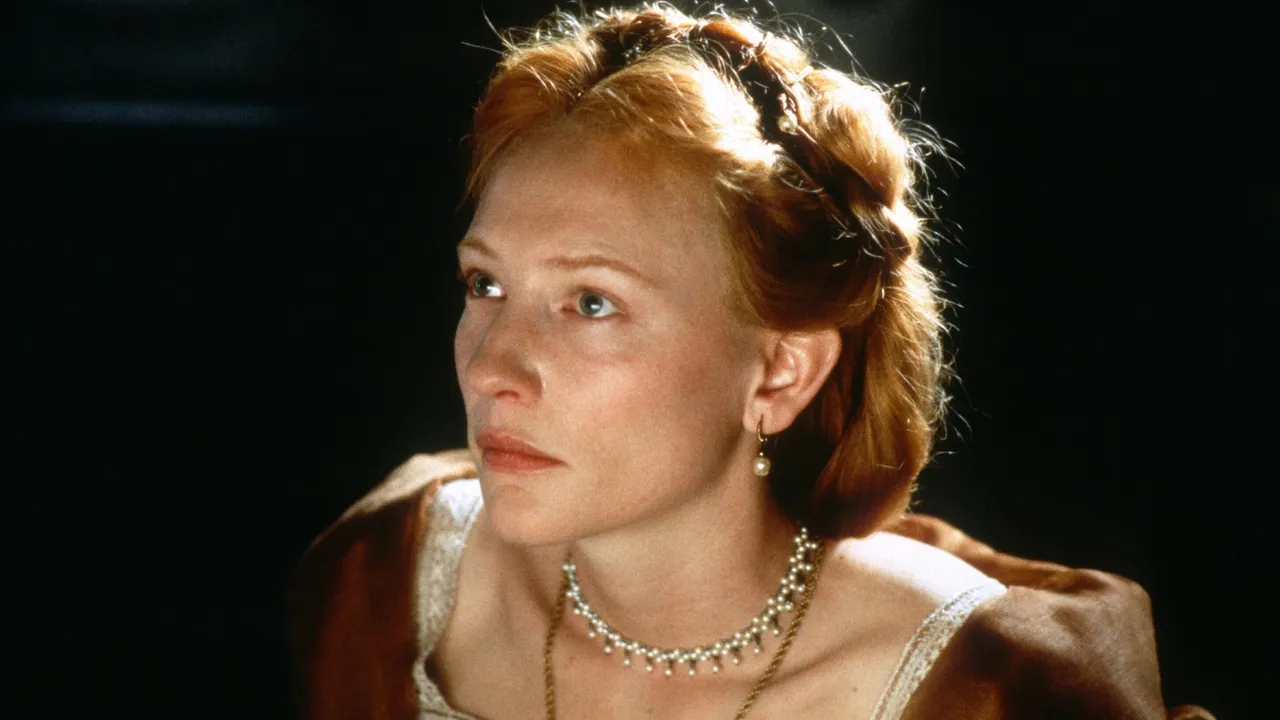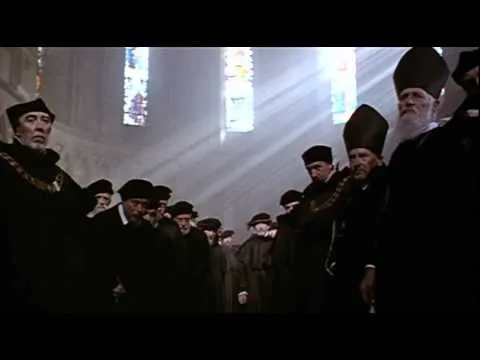
Recent adage of “elections have consequences” describes phenomenon that cinephiles, at least in certain parts of the world, can be familiar with. The author of this review experienced it in case of Elizabeth, 1998 British historical epic directed by Shekhar Khapur. Despite being Oscar-nominated and one of the most talked films of its time, it had to wait a year for its regular distribution in Croatia, which could have been explained with its content being unfavourable to Catholic Church and, consequently, to the ruling party whose ideology was at the time closely associated with that particular institution. Only after elections in which that party was removed from power by slightly more liberal coalition Elizabeth became accessible to Croatian audience.
The protagonist, played by Cate Blanchett, is Elizabeth I, queen of England, known as one of the greatest monarchs in the history of British Isles and one of the most legendary female monarchs in the history of the world. The plot begins in 1554, few year after the death of king Henry VIII, Elizabeth’s father who had severed centuries.-old ties between England and Catholic Church. The throne was passed on to Elizabeth’s older sister Mary (played by Kathy Burke), who happens to be fanatical Catholic determined to return England to the old ways and whose methods of erradicating Protestant heresy earned her a nickname “Bloody Mary”. Mary, much to the displeasure of Catholic nobles led by Duke of Norfolk (played by Christopher Ecclestone), doesn’t have a natural heir; her alleged pregnancy turns out to be a tumour that would ultimately kill her. The throne will be inherited by Elizabeth who is unrepentant Protestant, so Norfolk has her imprisoned under suspicion of treason. Mary dies before signing Elizabeth’s death warrant so, Elizabeth in 1558 becomes new English queen. Her reign begins in dire conditions – state treasury is empty, the army is proven incompetent during disastrous campaign against Scotland and bishops undermine queen’s authority from pulpits. Sir William Cecil (played by Richard Attenborrough), Elizabeth’s old and loyal advisor, suggests that she could improve her position by striking marriage alliance with powerful European dynasty, with Spanish king Philip and French Duke of Anjou (played by Vincent Cassell) being the most likely candidates. Elizabeth is, however, reluctant because of her love towards Robert Dudley (played by Joseph Fiennes), Earl of Leicester, and her indecision fuels endless intrigues by the court, most of them set up by Norfolk. To make things worse, Pope Pius V (played by John Gielgud) issues papal bull promising place in heaven to anyone that assassinates heretical queen. Elizabeth nevertheless begins to learns the art of politics while Sir Francis Walsingham (played by Geoffrey Rush), her trusted spymaster shows little scruples in setting up traps for her enemies.
Unlike most Hollywood or British productions dealing with life and times of Elizabeth, script by Michael Hirst doesn’t cover her greatest triumphs in the latter period, that would be characterised as golden age. Instead, the focus in on her personal transformation from inexperienced teenager to formidable stateswoman. That approach is also taken from Shekhar Kapur, Indian director who was, at the first glance, strange choice for directing this film. Kapur who, by his own admission, haven’t got any clue about Elizabeth when taking the project, had made similar film before - Bandit Queen, biopic about legendary female outlaw Phoolan Devi. Kapur in his depiction of mid 16th Century England didn’t pay much attention to spectacle, exotic costumes or architecture. Almost entire film takes place in interiors – in the palaces that are shown to be dark, cold places where lives of monarchs are cheap, and lives of their subjects even cheaper. With existence being nasty, brutish and short, many of them indulge in promiscuity; as such Elizabeth creates atmosphere very much like Queen Margot, French film that few years earlier covered the similar subjects and time period. Kapur at times experiments with styles, with shooting scenes from unusual angles, like in the opening that features burning of condemned heretics. Cinematography by Remi Adefarasin, on the other hand, is at times too dark which makes some of the scenes and plot developments a little bit confusing. This is especially problematic in the second part of the film, when the plot becomes too accelerated, simply in order to get finale in style of The Godfather, while trying to have the plot neatly packaged within two hours.
The cast, which is rather diverse, is very good. Cate Blanchett, at the time still relatively unknown Australian actress, shines in the very demanding role of the character who had been played by many great actresses in countless films and television shows. Blanchett’s convincing portrayal of transformation from weak girl to strong monarch is one of the greatest performances of her career and was nominated for Oscar. A convincing case can be made that she deserved Academy Award more than Gwyneth Paltrow for her overrated performance in Shakespeare in Love. Her countryman Geoffrey Rush is very effective in the role of dark, cynical and efficient Walsingham. The rest of the cast, which, among others, include soccer star Eric Cantona in the role of French ambassador, is also good, with an exception of Joseph Fiennes who happens to be bland, especially in the second part of the film. Music score by David Hirschfelder isn’t particularly memorable, unlike classical piece by Edward Elgar, which is used much better near the end.
There were two groups that were unhappy with Elizabeth. Certain Catholic groups publicly protested the film, claiming that its content, in which almost Catholic characters are portrayed as subversives, murderous fanatics, lunatics or terrorists, might fuel anti-Catholic sentiment. The other group, with much more arguments for their complaints, were professional historians. Hirst, while taking the most basic facts about Elizabeth and her reign as template for his script, took very cavalier approach to many details and this film would do much disservice to those who try to use it as a source of their own knowledge about English or European history. Hirst, on the other hand, could justify his over-creative approach with the desire to provide extra drama and in, doing so, he mostly succeeded. Hirst would later use the same methods while creating two popular television series - The Tudors and Vikings - which mixed historical facts with fiction. Nine years later, Elizabeth received a sequel dealing with protagonist’s latter years under title Elizabeth: The Golden Age.
RATING: 6/10 (++)
Blog in Croatian https://draxblog.com
Blog in English https://draxreview.wordpress.com/
Leofinance blog @drax.leo
Unstoppable Domains: https://unstoppabledomains.com/?ref=3fc23fc42c1b417
Hiveonboard: https://hiveonboard.com?ref=drax
Bitcoin Lightning HIVE donations: https://v4v.app/v1/lnurlp/qrcode/drax
Rising Star game: https://www.risingstargame.com?referrer=drax
1Inch: https://1inch.exchange/#/r/0x83823d8CCB74F828148258BB4457642124b1328e
BTC donations: 1EWxiMiP6iiG9rger3NuUSd6HByaxQWafG
ETH donations: 0xB305F144323b99e6f8b1d66f5D7DE78B498C32A7

